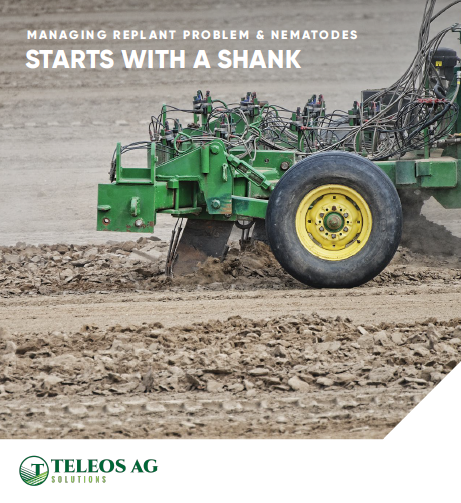Managing Soil Variables For Sustainable Crop Production

Part of a sustainable cropping system includes desiging fields to wrap around hilly terrain to limit runoff and soil erosion. Photo credit: Rosemary Gordon
I grew up on a sheep and hay farm in Upstate New York (along with an assortment of other livestock, pets, and four siblings).
As a child and teenager, I was regularly “invited” to help with tilling, planting, weeding, and harvesting a wide variety of vegetables, fruits and flowers in the two large garden plots my parents continue to use. My maternal grandparents ran a nursery, greenhouse, and landscaping business.
These days, my gardening efforts barely count as gardening. I’m a professional soil conservationist, not a vegetable farmer.
I write this from the perspective of an observer rather than a practitioner of the art and science of commercial vegetable production. That said, I have observed that long-term success in any agricultural enterprise is based largely on how well farmers manage the variables within their control, and how they react to those beyond their control.
Sure, there’s a little bit of luck in the mix. Over the long run, though, you can’t rely on luck.
This is true for every aspect of agriculture from marketing to soil management. Weather is generally considered outside of our control but we can prepare for even extreme weather variations to some extent and we can build resiliency through appropriate response strategies including managing soil variables for soil health.
Steadfast Soils
With few exceptions, agricultural activities in North America have not been going on long enough to drastically change the most fundamental physical and taxonomic characteristics of our soils (mining and excessive erosion are two of those exceptions). Ridge tillage, raised beds, land smoothing, and other practices that mechanically manipulate the surface of the soil do not change the fundamental soil type, although production and operational improvements can result and resiliency levels can be significantly higher.
In some parts of the country, surface and subsurface (“tile”) drainage are important soil management practices. Irrigation is important in others. Sometimes both can be beneficial on the same land. Increasingly, irrigation water conservation is an expectation or requirement as land and water managers in large parts of the country respond to extended drought conditions and water shortages.
Erosion and runoff control through the use of diversions, terraces, grassed waterways, and water and sediment control basins also can be useful soil management tools in some fields. Appropriate on-site water management is part of a plan for long-term success and response to climatic variables. Addressing runoff and discharge from surface and subsurface drainage systems is increasingly part of what is required for environmentally sustainable and socially acceptable crop and livestock production.
In most of the country, with soil health as a priority, technical and financial assistance is available through various federal, state, and local agencies and programs for implementation of practices with soil and water conservation benefits.
Find out more about these opportunities at Nrcs.Usda.gov/wps/portal/nrcs/main/national/programs/farmbill/.
Factors Impacting Production
Like physical characteristics, chemical and biological characteristics of soil also impact production and resiliency. Nutrient cycling and availability are heavily influenced by soil organic matter. Soil organic matter and biological activity also greatly impact soil aggregate stability and water infiltration. Nutrient management plans based on regular soil testing (sometimes combined with plant tissue analysis) are the key to understanding both the appropriate rates of fertilizer application and long-term, sustainable soil health, regardless of whether nutrients are being supplied through conventional or organic sources.
The federal Environmental Quality Incentive Program (EQIP) continues to provide financial support for the development of basic and advanced nutrient management plans. Practices like cover crops (including multi-species cover crop options), conservation tillage, mulching, and in certain circumstances crop rotation adjustments can be supported with technical and financial assistance through EQIP or other programs and can have big impacts on soil health and long-term sustainability.
As stated on the web page SoilQuality.org, “Soil quality provides the basis for environmental quality and sustainable use.” It’s worth spending some time at this site as a way to continue exploring the basics of soil quality, functions, characteristics and management strategies. In this International Year of Soils (Fao.org/soils-2015/en/), I think it is especially appropriate to think a little more than usual about how we manage soils to maximize beneficial soil functions and soil health.










